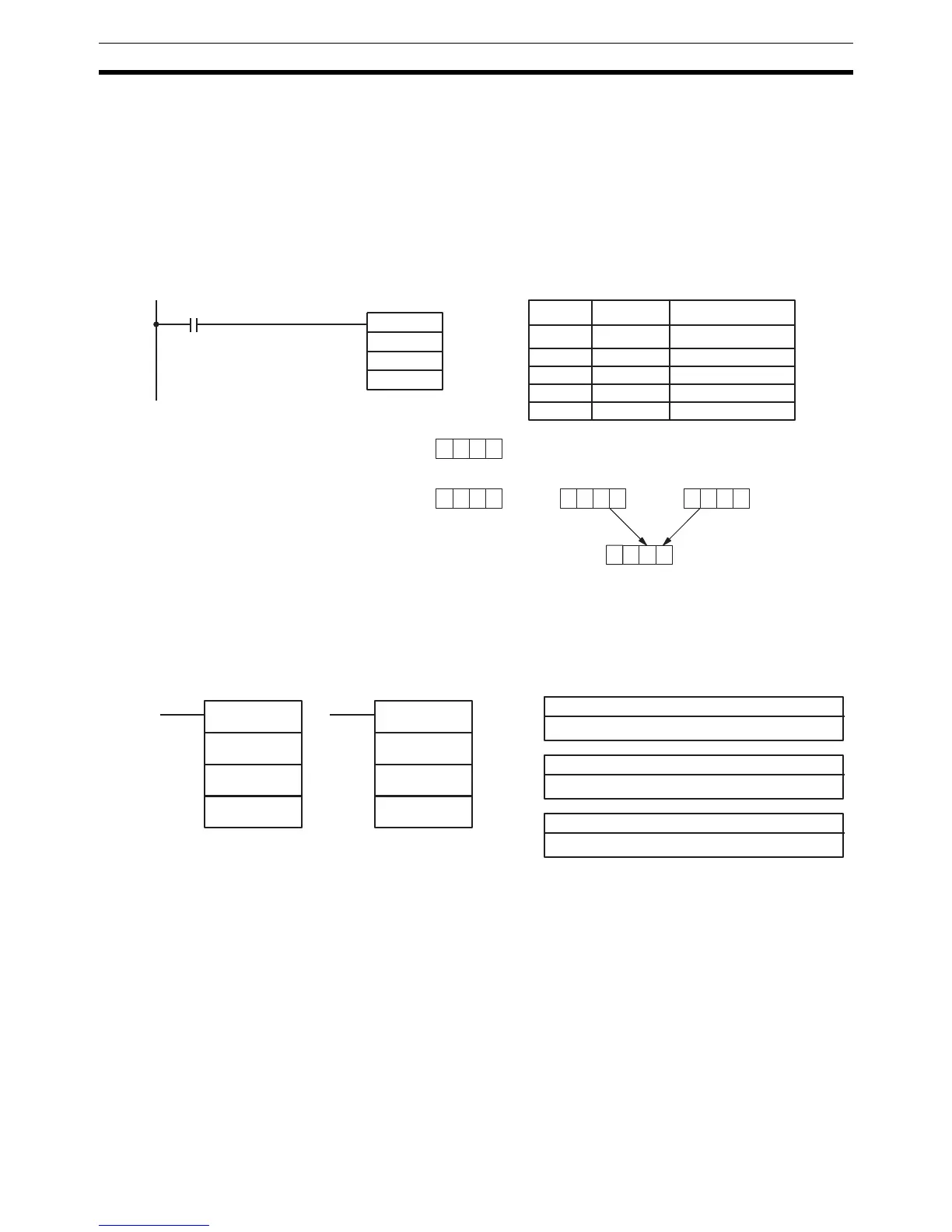272
Conversion Instructions Section 5-19
If the parity of the ASCII code in S does not agree with the parity specified in
Di, the ER Flag (SR 25503) will be turned ON and the instruction will not be
executed.
Flags ER: Incorrect digit designator, or data area for destination exceeded.
Indirectly addressed DM word is non-existent. (Content of
∗DM word
is not BCD, or the DM area boundary has been exceeded.)
Example In the following example, the 2
nd
byte of LR 10 and the 1
st
byte of LR 11 are
converted to hexadecimal values and those values are written to the first and
second bytes of IR 010.
5-19-10SCALING – SCL(66)
Limitations This instruction is available in the CQM1 only.
P1 through P1+3 must be in the same data area.
DM 6144 to DM 6655 cannot be used for P1 through P1+3 or R.
Description SCL(66) is used to linearly convert a 4-digit hexadecimal value to a 4-digit
BCD value. Unlike BCD(24), which converts a 4-digit hexadecimal value to its
4-digit BCD equivalent (S
hex
→ S
BCD
), SCL(66) can convert the hexadecimal
value according to a specified linear relationship. The conversion line is
defined by two points specified in the parameter words P1 to P1+3.
When the execution condition is OFF, SCL(66) is not executed. When the exe-
cution condition is ON, SCL(66) converts the 4-digit hexadecimal value in S to
the 4-digit BCD value on the line defined by points (P1, P1+1) and (P1+2,
P1+3) and places the results in R. The results is rounded off to the nearest
@HEX(––)
HR 10
LR 10
00000
010
Address Instruction Operands
00000 LD 00000
00001 @HEX(––)
LR 10
HR 10
010
3 1 3 0LR 104 2 3 2
Conversion to
hexadecimal
LR 11
0 0 2 1010
3 5 3 4LR 12
0 1 1 0HR 10
S: Source word
IR, SR, AR, DM, HR, TC, LR, #
Ladder Symbols Operand Data Areas
@SCL(66)
S
P1
R
R: Result word
IR, SR, AR, DM, HR, LR
P1: First parameter word
IR, SR, AR, DM, HR, TC, LR
SCL(66)
S
P1
R
